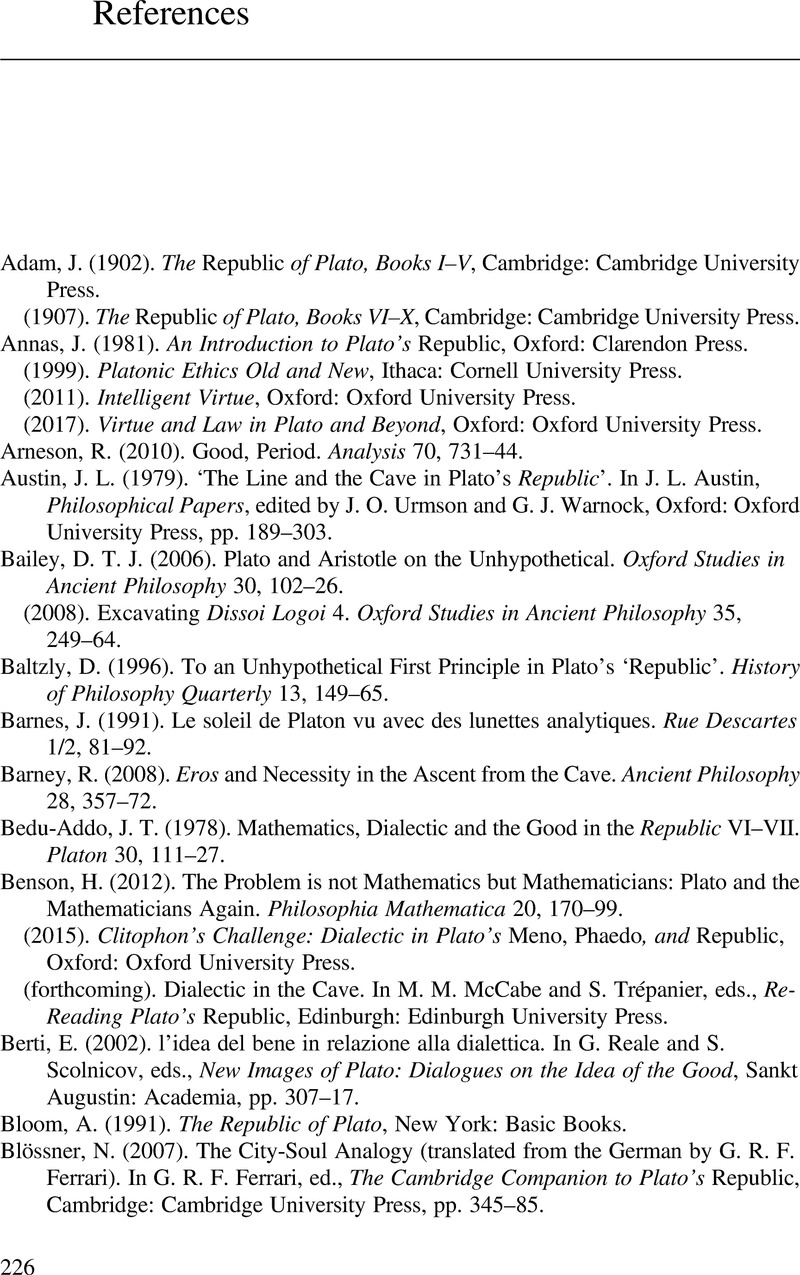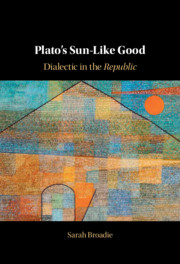Book contents
- Plato’s Sun-Like Good
- Plato’s Sun-Like Good
- Copyright page
- Dedication
- Contents
- Acknowledgements
- Part 1 Approaching the Sun-Good Analogy
- Part 2 The Form of the Good and Knowledge
- Part 3 The Form of the Good and Being
- Part 4 Various Further Questions
- Part 5 Winding Up
- References
- Index of Passages
- General Index
- References
References
Published online by Cambridge University Press: 08 July 2021
- Plato’s Sun-Like Good
- Plato’s Sun-Like Good
- Copyright page
- Dedication
- Contents
- Acknowledgements
- Part 1 Approaching the Sun-Good Analogy
- Part 2 The Form of the Good and Knowledge
- Part 3 The Form of the Good and Being
- Part 4 Various Further Questions
- Part 5 Winding Up
- References
- Index of Passages
- General Index
- References
Summary

- Type
- Chapter
- Information
- Plato's Sun-Like GoodDialectic in the Republic, pp. 226 - 234Publisher: Cambridge University PressPrint publication year: 2021



